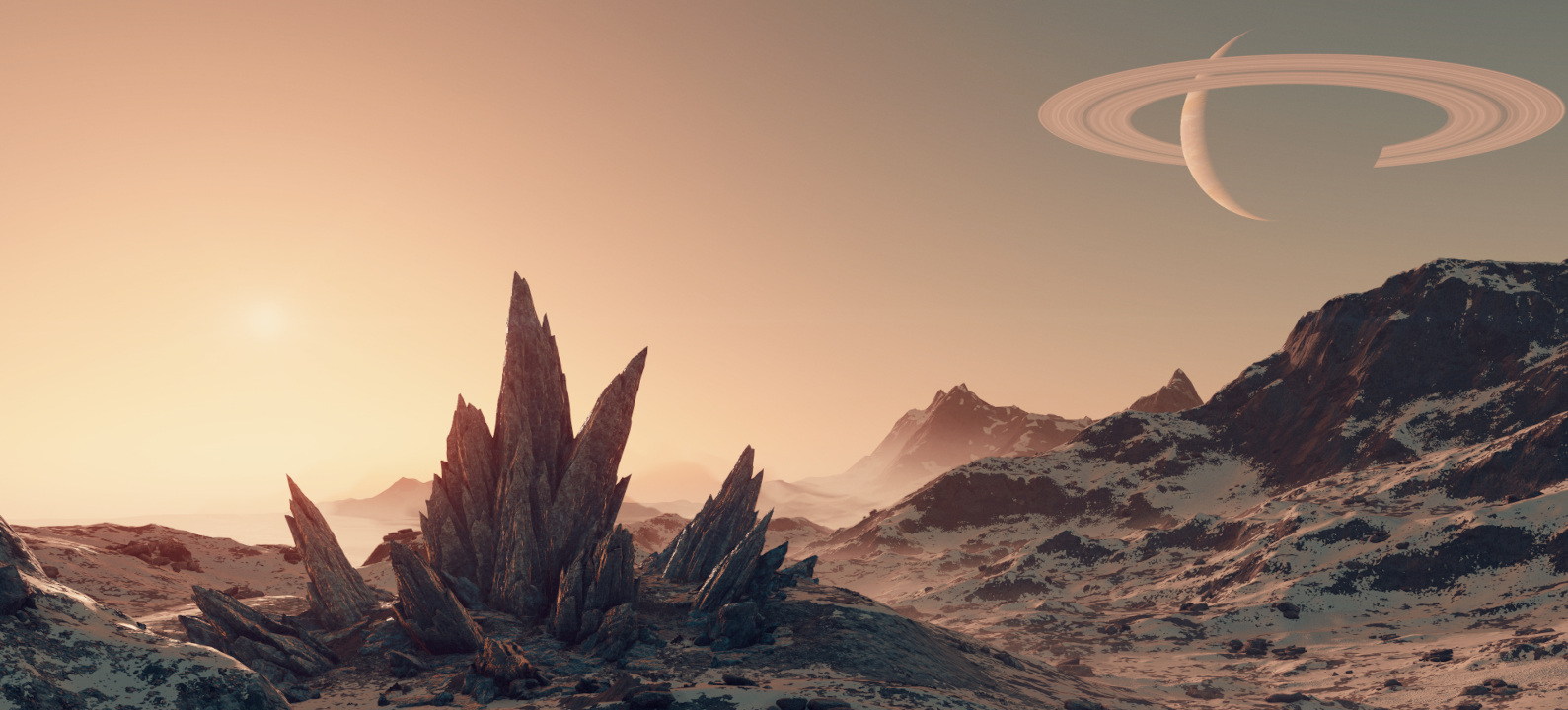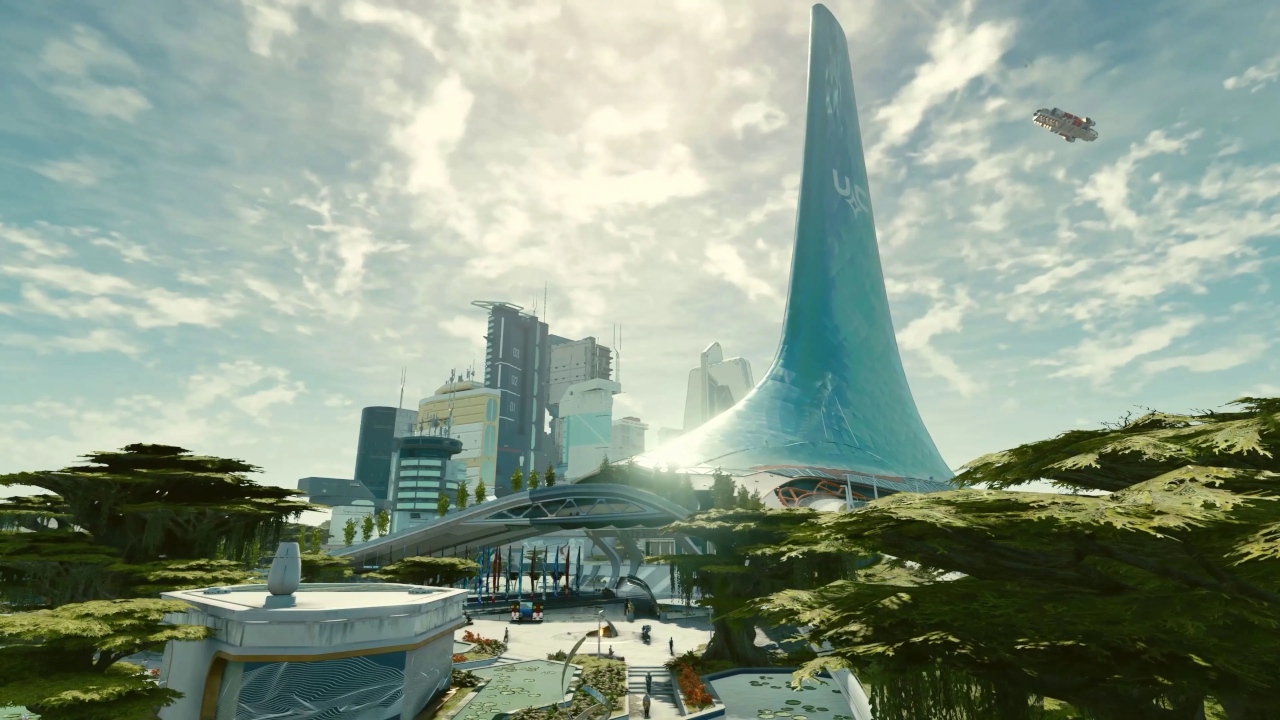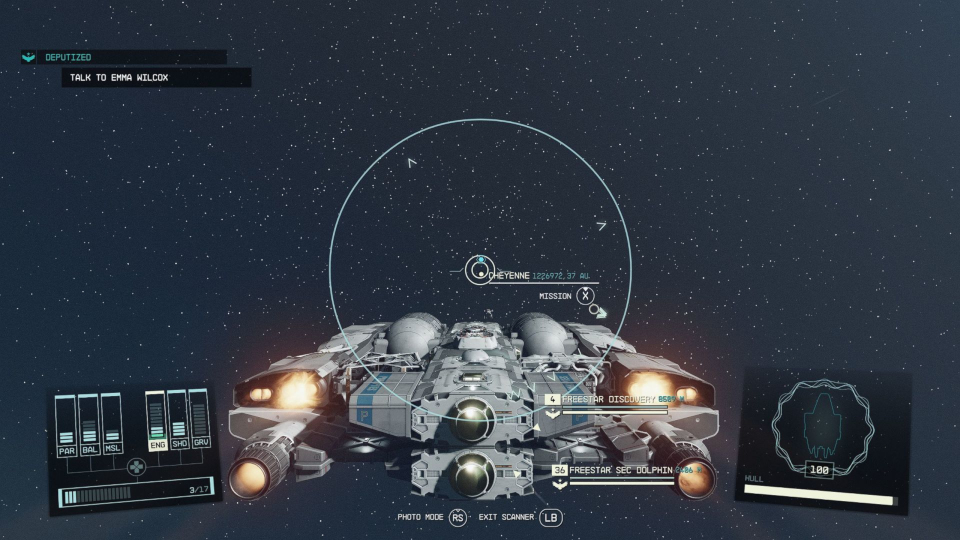The Magic of Starfield
Author: Vertette Filed under: World design Posted: October 16, 2023 00:00:00
Since the dawn of humanity, we've marvelled at the stars, wondering "what could be out there?" The answers we have right now might not even be that exciting, but the fascination we have with space continues anyway. The unknown never stops being interesting, and space is either an infinite unknown or very close to it. And like many of humanity's most thought-provoking questions like "what would you do if the world fell apart tomorrow" and "what if vikings were real", Bethesda made a game that taps into that very human question: Starfield.
Starfield, too, is very fascinating. Not so much because of what it is, but what it represents. Like Bethesda's past single player games, Skyrim and Fallout 4, it received a lot of favorable reviews from critics and seems to have sold a healthy amount of copies, yet Bethesda's fans seem rather sharply divided - moreso than usual - over a game that, on the surface, seems very similar to the studio's output over the past decade, and a lot of the criticism that can be found about the game online is scattershot. There doesn't seem to be a clear consensus on what exactly the game should've done, but a lot of the criticism do draw from the same well, whether directly or indirectly: Starfield is a game that fundamentally does not play to Bethesda's strengths as a studio. In simpler terms? The problem is the setting.
 To boldly... wait, I've seen those exact same rock spires two minutes ago.
To boldly... wait, I've seen those exact same rock spires two minutes ago.
So what are Bethesda's strengths? Well, if nothing else, their games can be very immersive and engaging, and no other developer makes a game quite like they do (and QA testers across the world are thankful for that every day). It's hard to sum up their design philosophy in one sentence, and it's probably pretentious of me to try and do so anyway, but here it is: "let the player do whatever they want, whenever they want, with no wrong choices, in a world that feels believably big". The past decade of Bethesda games have added "and must be playable until the end of time" to that philosophy on top. It's a design philosophy that has resulted in a lot of well-beloved games that have gotten a lot of praise for their immersive qualities and environmental storytelling and also Fallout 76, but there are flaws with this mentality that aren't inherently obvious. For now, let's focus on the "believably big" part of that equation.
Bethesda's games employed a lot of procedurally generated content back in Ye Olden Times, and it has made an uncelebrated return ever since Skyrim. There is nothing inherently wrong with the use of procedurally generated content, it's just that Starfield's use of it is so poor that people denounce it on sight. Simulating even a small part of the universe is a big task, and it makes sense to use procedurally generated content to make the universe feel believably big while making sure the game can release before Star Citizen's release and the heat death of the universe, whichever comes first. Half of the problem is the setting: all the planets in Starfield are flat, uniform and mostly devoid of life. Humanity's colonization of the stars seems to have been somewhat unsuccessful going by how few non-bandit people you find out there, and what little alien life there is can't be talked to. That's realistic, but it seems Bethesda has forgotten what's most important: what does that do for gameplay? The answer seems to have been nothing. There are plenty of obvious mechanics that would fit well in a harsher and more realistic science-fiction setting like this, and yet the game doesn't seem to care that much in exploring them outside of a select few like zero-gravity combat. Survival mechanics were apparently more of a factor during development according to Todd Howard himself, but as he explains, they "nerfed the hell out of it". Why would you not want to sell your new franchise's setting through its gameplay?
 New Atlantis marks the first time in a Bethesda game where the crowds felt somewhat dense. Maybe I'm a sociopath, but I will never get tired of shooting into the air and watching people scramble.
New Atlantis marks the first time in a Bethesda game where the crowds felt somewhat dense. Maybe I'm a sociopath, but I will never get tired of shooting into the air and watching people scramble.
To circle back to Bethesda's design philosophy, the problem with "no wrong choices" means that you will inevitably end up with very shallow roleplaying, which is a common criticism their recent games receive. Why can I walk into Solitude as an Imperial without issue? Why do I even have the option of building scrapyards when I'm supposed to be looking for my son? Why can I be the leader of every faction at once, even if they're supposed to be hostile towards each other? The list goes on. These games are too afraid to tell the player "no" or to give players a wrong choice. The problem with that philosophy is that while it makes their games very easy to pick up, play and put down, it also means that the world feels very player-centric and fake. The quality of Bethesda's writing has also not been a huge priority for some time now, so by design, their games are almost completely reliant on their art and music teams to pull you into the world. Before Starfield, Bethesda were the masters at this. In contrast, Starfield's setting severely limits how crazy and alien their planets can be. How does the studio that put out Morrowind fail so badly at making another alien feeling setting when that's literally what the game should be about?
The other half of the problem is the technology, which is so outdated even for Bethesda standards that it's shocking a modern AAA game released in this state, which is saying something in our current industry. The planets seem to make use of 2D noise distribution to generate stuff, a technique so outdated for terrain generation Minecraft ditched it back in Alpha, with zero artist defined rules used to generate anything. That's how you end up with the exact same ruin models spawning at the same coordinates on every planet with the same enemy spawn locations every time. Then there's space travel, which feels completely disjointed from everything else as you don't actually use it to travel. Seamless travel between space and planets is impossible in Starfield. The best way to get around is quick travelling through menus and sitting through loading screens, which are everywhere. They're so jarring it kills the last bits of immersion the game would've otherwise had. When you compare it to other games like No Man's Sky or even the unreleased Star Citizen, it's almost impressive just how last-gen it feels in comparison.
So you have an AAA game with a boring setting and some jank, big whoop, lots of AAA games do. The problem is that that sense of immersion, that magic that drew people into Bethesda's previous games, is almost completely gone from Starfield as a result. There's no sense of discovery when you encounter the same bases with the same enemies on a samey looking planet. There's no wonder in travelling through space by menus. What you're left with is a game that had a lot of talent behind it, but ends up feeling like less than the sum of its parts. All of the games' flaws - the wildly fluctuating writing quality, shallow mechanics, perfectly acceptable combat and jank - aren't new for Bethesda, but without that magic to immerse the player they're much more prominent this time around.
 The scale of space is such a hard thing to capture in a video game, it almost makes you wonder why Bethesda insisted on trying so hard. I'd trade in a thousand boring planets for twenty interesting ones.
The scale of space is such a hard thing to capture in a video game, it almost makes you wonder why Bethesda insisted on trying so hard. I'd trade in a thousand boring planets for twenty interesting ones.
So then why did Bethesda insist on this setting that creatively limits them so much, and then not at least mine it for gameplay mechanics? Obviously I can't prove this for certain, but my suspicion is that this was done entirely for pragmatic reasons. After all, Bethesda games have never been about what kind of interesting mechanics you could mine out of their settings, but about what kind of setting would fit with the mechanics they want to include, and I imagine Starfield was the same way. You can't exactly call this game focused on its "hard" sci-fi setting when you literally gain magic space powers throughout the story. The tech behind Starfield, as I went into earlier, is rather simplistic and outdated, but seeing how much content there is in the game, it's clearly not half-assed.
My guess is these simple, uniform and flat planets and disjointed travel really was the best Bethesda could do in a reasonable timeframe and budget, so the setting ended up matching what the tech can do and they didn't think it was that important for these features to be improved upon. Starfield seems much less interested in simulating an entire universe for you to explore and more interested in making the universe feel big while you're off on goofy space adventures with your crew, and while those goofy space adventures is where the game shines the brightest, it had to sacrifice a lot to get there. I don't want to say they should have been less ambitious, because God knows we could use more of that in this industry, but it's clear they swallowed much more than they could digest.
In that way, Starfield might be the most important game Bethesda has made since Skyrim. It shows exactly where their strengths and their weaknesses lie. It shows exactly what people love about their games and what people hate. Most importantly, it shows just how important good technology is to deliver a creative vision. Let's just hope Bethesda realizes all that too.